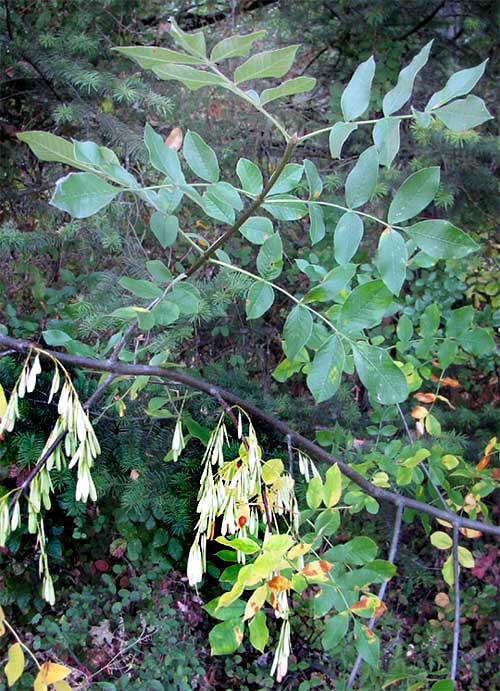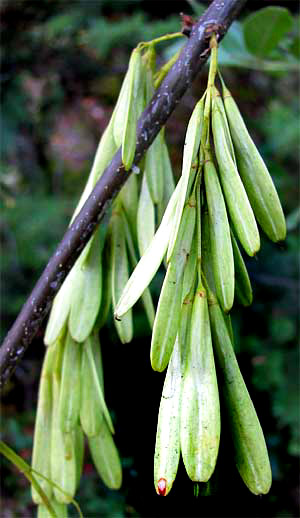Excerpts from Jim Conrad's
Naturalist Newsletter
from the August 9, 2009 Newsletter, issued from the Siskiyou Mountains west of Grants Pass, Oregon:
OREGON ASHES FRUITING
It's always a pleasure to meet for the first time a healthy, well established, dignified tree growing in its native land, photosynthesizing, flowering, fruiting, making shade, recycling nutrients, sheltering wildlife, just doing its thing, minding its business, contributing all it can to Life on Earth. Maybe there's something in my genes that causes me to be charmed by trees, and that's OK with me.
So the first time I came face to face with an Oregon Ash, FRAXINUS LATIFOLIA, one at a woods edge displaying its opposite, compound leaves as if in a museum, and graced with large, pale clumps of maturing fruits, I just had to stand back and admire, soaking in its presence. You can see such a Oregon Ash branch below:

Below, you can see a close-up of the fruits, sometimes known as "keys" but more technically called samaras (a winged fruit that doesn't split open at maturity):

Oregon's forests are so heavily coniferous that only three broad-leafed, deciduous trees are listed as growing over 100 feet tall: The Golden Chinkapin, Black Poplar, and the Oregon Ash. Of these the Oregon Ash is the main general-forest tree, so out here Oregon Ashes are even more striking than they might be if growing in the East. Also, there's only one ash species here; six are listed in Weakley's Flora of the Carolinas.
Oregon Ashes occur in moist, fertile soils from western Washington through western Oregon into central California. Possibly because it's usually surrounded by outstandingly important timber producers such as Douglas-fir, its main use here is for burning, its wood being known for splitting easily and having a high heat value. Historically there's been local use of its wood for tool handles, sports equipment, boxes, barrels and furniture.